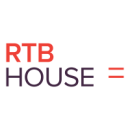The era of cookies is coming to an end. After years of tracking website visitors to collect data and personalize the user experience, a growing distrust of how that information is used has led to regulatory intervention.
But cutting cookies from your diet doesn’t necessarily signal the end of data-fueled personalization. As Michael Vlasak, digital marketing manager at healthtech company Zipari, noted, the fundamentals of marketing hold true with or without third-party data.
“These practices have existed well before digital marketing was established,” said Vlasak, who referenced the “95:5 rule,” which holds that 95 percent of the audience you market to at any given moment isn’t ready to enter a serious sales conversation.
“Marketers will not be effective if the main focus is trying to sell a product,” Vlasak continued. “You have to study and truly understand your market to provide value.”
Along with zero-party data — information that individual consumers intentionally and proactively share — and a range of other innovative strategies, marketers can still leverage the benefits of data-driven targeting while respecting their users’ privacy.
Built In New York checked in with three local tech professionals to learn how they’ve adapted their approach to data privacy while remaining ahead of the curve when it comes to strategy and execution.
How does the ongoing phase-out of third-party cookies affect your work as a marketer?
I don’t see the phase-out of third-party cookies having a significant effect on my work as a digital marketer because it is just one of the many advertising tools that I have in my arsenal. At Zipari, we have a specific target market in health plan organizations. We know our ideal customer profile and personas and engage with channel partners that advertise to our audience utilizing email marketing and native ads.
What strategies have your team implemented to personalize user experiences that don’t rely on third-party cookies?
The primary strategy we use to personalize our user experience is to focus on building our first-party data. We develop a deep understanding of our target market. We distribute industry surveys, conduct focus groups and roundtables and attend industry events like webinars and tradeshows so that we have a pulse on what the trends and pain points are. With this information, we can develop very specific targeted content that we know is relevant to our audience.
With this information, we can develop very specific targeted content that we know is relevant to our audience.’’
Beyond personalization, how can marketers thrive in a world without third-party cookies?
Focus on the fundamentals of marketing. These include having a clear understanding of your market and your ideal customer: what their challenges are, and whether they have an unmet need your organization addresses. Additionally, you have to be active in your target market and continually bring value beyond just selling your product or services.
How does the ongoing phase-out of third-party cookies affect your work as a marketer?
This change has been exciting! Personally, I feel lucky to be working for a company like RTB House that is on the forefront of something as big as working without cookies. We are collaborating with organizations like World Wide Web Consortium to come up with truly scalable methods for targeted advertising as a community.
We had the chance to partner with Google on its privacy sandbox initiative FLEDGE, working to develop two proposals that will help improve the user experience so that customers and brands alike can benefit from the new privacy restrictions. Being one of the first vendors in the world to be cookieless-ready has meant that we have needed to take the lead on education. We want to ensure that our media friends, agency partners, clients, publishers and anyone in our industry has access to what we know as soon as we learn it.
We understand that time is of the essence, and that while Google announced the deprecation of cookies for 2023, marketers need to be solving for this now. With all of this in mind, a lot of our marketing and communication shifted to support education about phasing out cookies. We have split our focus between news about our cookieless methods while also developing general knowledge materials for marketers to help with this transition.
What strategies have your team implemented to personalize user experiences that don’t rely on third-party cookies?
A change this big calls for a diversified approach to solving; no one method will deliver a comprehensive solution for any organization of reasonable scale. For this reason we have chosen three methods to solve for cookieless in order to future-proof our tech stack for both short-term and long-term changes. Our three-pronged strategy is identity-based, non-identity-based and group-based cookieless methods.
We have been working to integrate methods that incorporate a variety of ways in which users can be matched using a unique identifier of some kind, such as an email address or login name, instead of a 3P cookie. Some of our partners include LiveRamp and ID5.
For non-identity initiatives, we utilize context AI to target users in real time from signals like the website’s URL, content category, text and even images to create a dynamic ad experience.
When it comes to group-based targeting, we have partnered with Google to develop two methods to deploy for FLEDGE. These methods work together to maintain user values and bidding efficiency while still delivering dynamic relevant ads to users in real-time and maintaining performance and privacy standards.
This is a great time to review and expand what data you are collecting first-party and zero-party.’’
Beyond personalization, how can marketers thrive in a world without third-party cookies?
This is a great time to review and expand what data you are collecting first-party and zero-party. This kind of data is not under scrutiny and has value to enhance your campaigns. These data types can also be exported to some vendors to be layered with their technology and audiences for improved performance or unique creative strategies. Zero-party data from forms and surveys can help to improve the results of retention campaigns and loyalty programs.
Ensure that you are asking your current and potential partners the difficult questions about cookieless. For example, can they ingest your data? Are they ready for cookieless? Is their solution futureproof? What is their technical plan to solve for it? What impact will they have? Identify partners who are prepared for this change and equipped to give complete answers. Many vendors and agencies are still not ready, and some have not even started preparations.
It will be important to test a variety of cookieless methods. The methods will all perform differently and with differing reach, scale and learnings. There will be a proportional balance you will need to find among them in order to maintain your performance.
How does the ongoing phase-out of third-party cookies affect your work as a marketer?
At DeepIntent, we rely on a blend of cookie-based and cookieless data to provide our services, so we’re already well-positioned for the cookieless future. Techniques that rely on third-party cookies like retargeting will become less effective as a result of this phase-out, and marketers will have to rely heavily on partners, suppliers and publishers who have built strong relationships with users who have consented to the use of first-party data.
What strategies have your team implemented to personalize user experiences that don’t rely on third-party cookies?
Since DeepIntent is a healthcare-specialized demand-side platform, we’ve had to build privacy-safe solutions that are compliant with strict industry regulations like HIPAA. We’ve also had to adopt techniques that don’t rely on one-to-one identification for the delivery of programmatic ads. For example, our “patient modeled audiences” solution uses a patented machine-learning algorithm to reach campaign-specific modeled audiences with speed and precision in a privacy-safe way. For campaigns targeting healthcare providers, we use a combination of first-party data integrated directly from publishers we’ve partnered with and cookies to personalize the experience.
We use first-party data integrated directly from publishers we’ve partnered with and cookies to personalize the experience.
Beyond personalization, how can marketers thrive in a world without third-party cookies?
Shift toward the use of first-party data, as well as other channels where privacy issues are not as critical, like connected TV. With CTV, we can serve ads at the household level instead of the individual level. I think some other best practices we’ll continue to see are self-regulation across the industry and the adoption of universal IDs.










